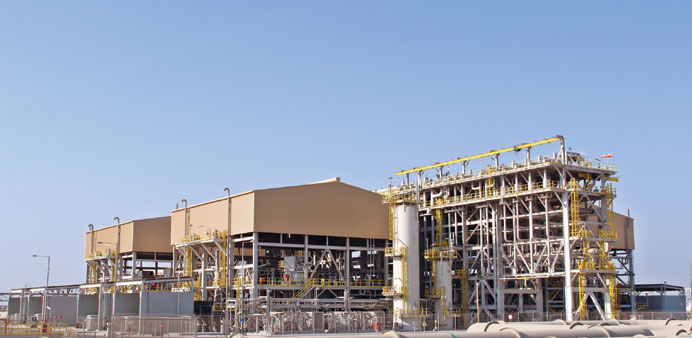A general view of the Central Compressor Area of the JBOG project. It will provide savings of 29bn standard cubic feet per year flaring reduction, which is enough gas to produce 750MW to power 300,000 homes.
By Peter Alagos/Business Reporter
The newly-inaugurated Jetty Boil-off Gas Recovery (JBOG) Project in Ras Laffan represents a significant milestone in Qatar’s efforts to reduce carbon emissions from its liquefied natural gas (LNG) industry, Qatargas CEO Sheikh Khalid bin Khalifa al-Thani said.
Sheikh Khalid said the project will result in a 90% reduction in current flaring at Ras Laffan LNG loading berths, equivalent to annual greenhouse gas (GHG) savings of 1.6mn tonnes of carbon dioxide (CO2), which is the same amount of annual GHG emissions of 175,000 vehicles.
He also said the JBOG project will provide savings of 29bn standard cubic feet (bscf) per year flaring reduction, which is enough gas to produce 750MW to power 300,000 homes.
“Environmental protection and sustainable development of our natural resources is a key requirement of Qatargas’ direction statement, and is in line with the wider goals of the Qatar National Vision 2030.
“The Qatar National Development Strategy 2011-2016 calls for halving gas flaring to 0.0115bn cubic metres per million tonnes of energy produced from the 2008 level of 0.0230bn cubic metres per million tonnes, and our JBOG facility is the main reason that Qatargas has achieved this target well before 2016,” he explained.
According to Sheikh Khalid, the project was designed to recover the boil off gas from simultaneous multiple ship loadings at Ras Laffan, the world’s largest LNG export terminal and the only facility where six LNG ships can be loaded simultaneously.
“As the -160°C LNG is loaded onto the ships, around 1% of the LNG evaporates (boil-off gas) due to temperature difference between the cold LNG and the warm ship tank. This boiled-off gas is flared at the berth because there is no outlet for the low-pressure gas,” he further explained.
He added that the boil off gas from the ships will then be transported to a central compressors area where the gas is compressed and then sent back to the LNG plants to be used as fuel gas or converted into LNG.
“The entire boil off gas train is the largest in the world. Today, there has never been an LP boil off gas compressor ever built requiring such large volumes at such a low suction pressure,” Sheikh Khalid said.
Qatar expanding gas output with $1bn recovery plant
Bloomberg/Doha
Qatar, the world’s biggest producer of liquefied natural gas, is gathering even more gas with a $1bn plant that is recovering what used to be wasted fuel.
Since the plant started in October in Ras Laffan Industrial City north of Doha, it has recovered gas from over 500 ships.
“We don’t have an expectation of an economic return from the project, but we will benefit from the recovered gas,” Saad Sherida al-Kaabi, Qatar Petroleum’s chief executive officer, said yesterday at an inauguration ceremony for the project.
The JBOG has capacity to produce about 100mn cubic feet of natural gas a day, or the equivalent of 600,000 tonnes a year of LNG, making it the world’s biggest plant of its kind. Gas that used to be burned off or lost through evaporation when fuel was loaded on ships is instead being sent to Qatar’s 14 LNG production plants, which had a combined output of about 77mn tonnes last year.



